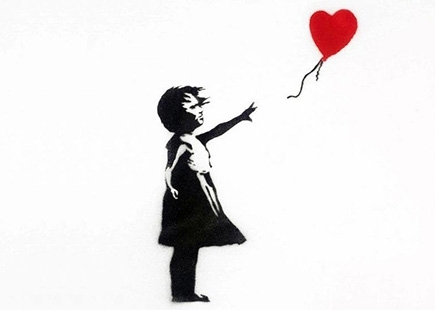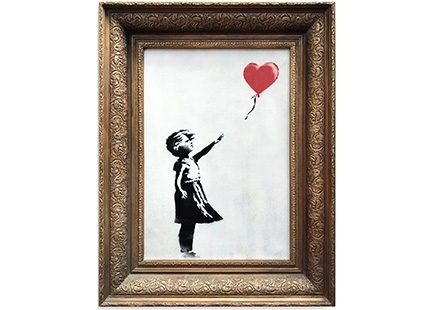Was Banksy's shredded picture a PR stunt, art terrorism or does he want us to question the value of art itself?

The Background
You’d have to be living under a rock – or not be a middle-class London creative type – to have failed to spot Banksy’s latest stunt.
There are some who believe Banksy to be a sorry excuse for an artist. Not a true talent. Unschooled in the basics of the craft.
But the reality is that, regardless of his merits as a painter, sculptor and installation artist, his skills in the art of publicity are unrivalled by anyone else in the “industry” of public relations.
His is a talent that recalls the greatest of global showmen – a Barnum or Copperfield or Dynamo of our age – and one that knocks other “anti-establishment art terrorists” into a cocked-hat.
From leaving a Guantanamo Bay figure in Disneyland to the notorious “elephant in the room” to works on the Israel / West Bank border to his Dismaland installation, Banksy is a master of creative story-making.
Sometimes those stores are about the issues he cares about. Sometimes they are simply about himself.
The Big Idea
For those who may have missed it, the story runs thus.
Banksy made, and framed, a copy of his iconic Girl With a Balloon stencil painting in 2006.
It was sold.
Unbeknownst to anyone (or so the story goes), at the time of making, Banksy himself fitted the frame of said painting with a shredder.
This was on the basis that, should the painting ever be sold at auction (because the artist is an inveterate hater of the secondary market for his works), the artwork would slip down within its frame and “self-destruct”.
Fast forward to a couple of nights ago and, within seconds of its sale for £1 million at Sotheby’s, the painting did just that.


What He Did
What then ensued was a PR coup to match the sheer quality of the idea that it promoted.
Banksy’s Twitter feed briefly carried a video of the making of the frame in question and a reveal of the backstory to this global news coup.
Accompanying that was video footage of the shocked faces of those in the Sotheby’s sale room as the hammer came down and the artwork in question shredded itself to gasps of onlookers.
The video was online for minutes before it was taken down.
However, that was time enough for others on the web to grab the file and repost it themselves. The video has since reappeared on Instagram with tens of thousands of views. It’s being embedded in articles around the world.
The debate now, of course, is whether the contract stands and the buyer (who remains anonymous) is still obliged to pay for the work. In the mind of this writer, it’s just been made three times as valuable by attaining an iconic status.
That is a conversation that is being had across editorial and social media – as well as in pubs, bars and living rooms – across the globe.
The Review
Who knows what the aim of this was? Maybe we’ll never know.
It might’ve been a commentary on the world of the auction and a questioning of the value of art in a globalised art market, and yet might at the same time have trebled the value of an artwork sold seconds before the stunt took place.
If it was then, one might argue, this was a failed stunt. Its impact was the very opposite of the message intended.
This was an act of PR terrorism with the hallmarks of a terrorist attack on a loathed institution – a random, unexpected act destroying something of value, the claim of responsibility, the back story of the making of the “heist”, the mystery about its true aims.
Yet, as a piece of promotion of “brand Banksy” it has got us all talking about the wit, intellect and creativity of its creator.
In Hindsight
Another act of genius from a master of the art of the stunt.
If you enjoyed this article, you can subscribe for free to our weekly email alert and receive a regular curation of the best creative campaigns by creatives themselves.
Published on:


